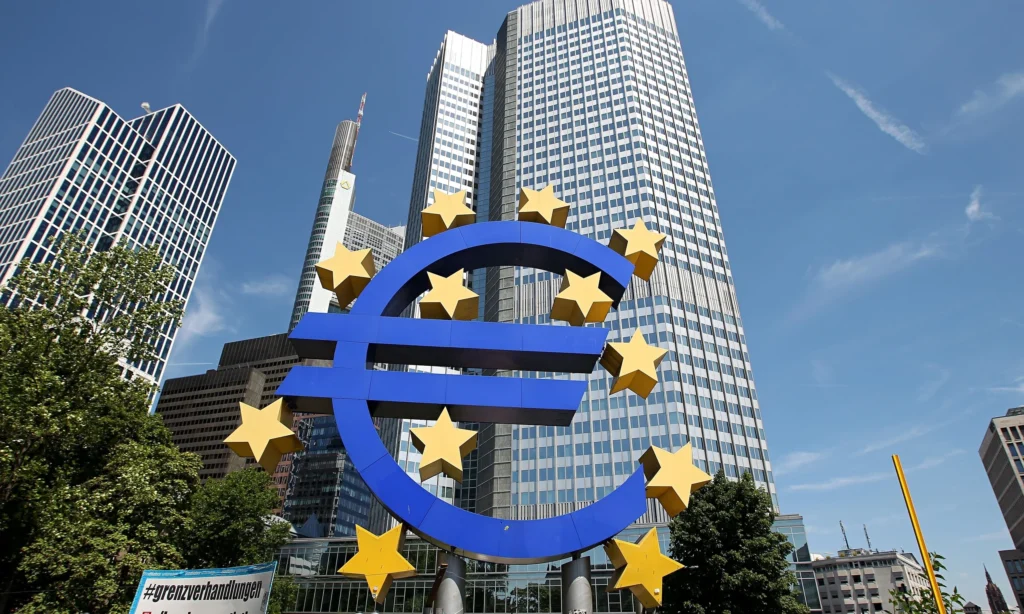However, the battle is far from over, with signs indicating that challenges will persist.
Inflation across the 20 countries in the eurozone has experienced a significant drop, falling from over 10% at the end of 2022 to slightly above the ECB’s 2% target in recent months. This decline has been largely attributed to lower fuel costs and a stabilization in supply following the post-pandemic disruptions.
However, this recent progress appears to have stalled, with indicators pointing to potential instability in eurozone inflation, mirroring patterns observed in the United States.

The ECB has taken action by lowering borrowing costs to historically low levels, acknowledging the progress made so far in curbing inflation. However, the outlook for the coming year remains challenging, suggesting that the fight against inflation is far from over. The economic environment remains uncertain, prompting the ECB to adopt a more cautious stance regarding future monetary policy decisions.
The European Central Bank (ECB) has decided to cut its deposit rate to 3.75%, down from a record high of 4.0%, marking its first reduction since 2019. Despite this move, the ECB has also revised its inflation projections upward for this year and next. Emphasizing its reliance on incoming data, the bank reiterated that any further interest rate cuts will depend on evolving economic conditions, stressing the need to keep borrowing costs at levels that effectively control prices.
“Despite progress in recent quarters, domestic price pressures remain strong, particularly due to rising wages, and inflation is likely to stay above target until next year,” the ECB stated.
Thursday’s decision aligns the ECB with other central banks, such as those in Canada, Sweden, and Switzerland, which are reversing some of the aggressive interest rate hikes seen in recent times. It is expected that the U.S. Federal Reserve, facing stronger-than-anticipated inflation readings this year, may join this trend in the second half of the year.
Recent inflation data has been stronger than expected, fueling concerns about the challenges that may arise in the “final mile” toward the ECB’s inflation target. This concern has been highlighted by influential board members, such as Isabel Schnabel.
Notably, inflation in the services sector has drawn particular attention, as it is considered especially significant in reflecting domestic demand. In May, services inflation rose to 4.1%, up from 3.7% in the previous month.
Despite these concerns, most economists continue to expect the ECB to stay on course with interest rate cuts in the coming months, projecting a rate of 2.50% by the end of 2025. This outlook reflects the persistence of inflationary pressures and the ongoing need for monetary stimulus to support the eurozone’s economic recovery.
Forecasts indicate only two more ECB rate cuts this year, scheduled for September and December. “Further cuts in September and December remain our baseline scenario,” said HSBC economist Fabio Balboni in a statement. However, he cautioned that the recent persistence of services inflation may require greater caution from the ECB.
The recovery in economic growth has also eased pressure on the ECB, weakening the argument that high interest rates are harming economic activity.
However, a key issue is the stance of the U.S. Federal Reserve (Fed) and whether it will begin or further delay its own cycle of monetary easing.
A more restrictive Fed would likely result in a weaker euro and higher imported inflation for the eurozone. However, it could also drive up yields in global bond markets—a complex dynamic whose net effects are difficult to predict.
In conclusion, projections indicate that the ECB will implement only two interest rate cuts this year, in September and December. However, the persistence of services inflation and the gradual recovery of economic activity suggest the need for additional caution from the central bank.
Moreover, uncertainty surrounding decisions by the U.S. Federal Reserve adds complexity to the outlook, with potential impacts on the euro, imported inflation, and global bond market yields. Given these considerations, the future of monetary policy in the eurozone remains subject to adjustments based on new economic data and global developments, underscoring the importance of flexibility and ongoing analysis in guiding ECB decisions.
The European Central Bank (ECB) plays a fundamental role in managing monetary policy and ensuring financial stability in the countries that make up the eurozone. Founded in 1998, the ECB is headquartered in Frankfurt, Germany, and is responsible for formulating and implementing monetary policy for the 19 European Union member states that have adopted the euro as their official currency.
The ECB’s main responsibilities include setting and implementing the key interest rate, conducting open market operations, supervising banks, and maintaining price stability in the eurozone. Price stability is the ECB’s primary objective and is defined as an annual inflation rate close to, but below, 2%.
To achieve its goals, the ECB holds regular Governing Council meetings to discuss and make decisions on monetary policy. These decisions are often based on detailed economic analyses and assessments of key eurozone economic indicators, such as inflation, economic growth, unemployment, and financial conditions.
Additionally, the ECB plays a crucial role in overseeing and regulating the eurozone’s banking system, ensuring financial stability and the integrity of the broader financial system.
In summary, the ECB is a key institution in the economic governance of the European Union, with critical responsibilities in shaping and implementing monetary policy, supervising banks, and maintaining financial stability in the eurozone. Its actions and decisions have a significant impact on financial markets and the region’s economy.

